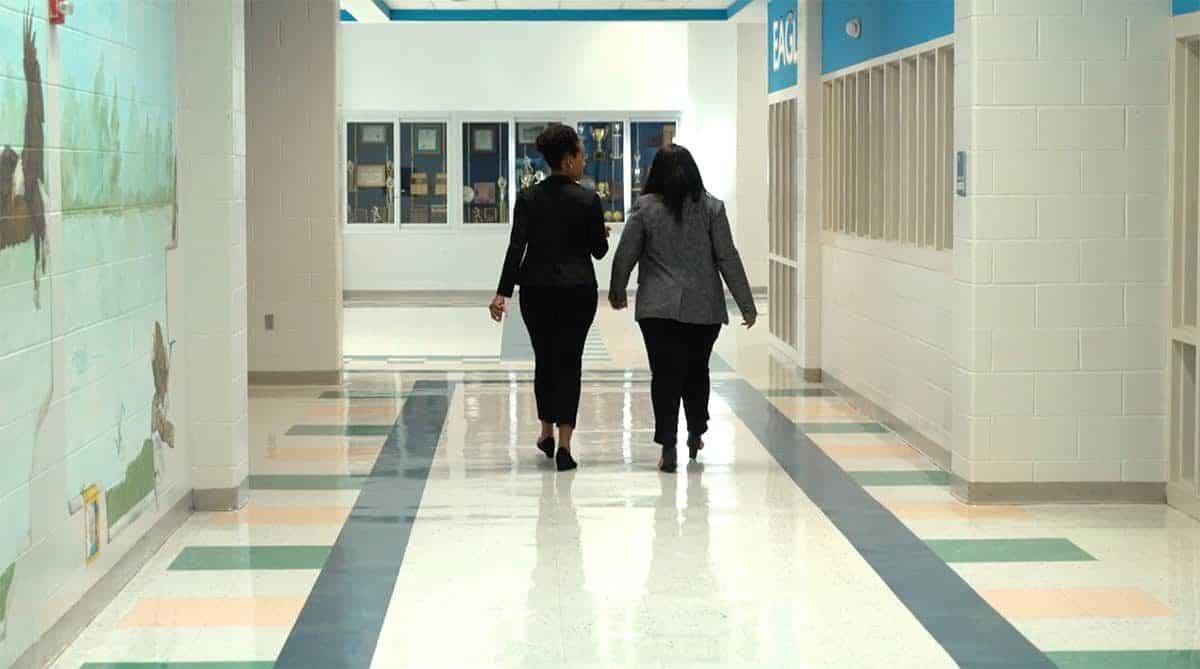
Having her own kindergarten class had been a dream in motion for almost eight years. Now it was a nightmare. Nobody expected trying to teach letters and numbers to thirty easily distracted kids over a monitor to go smoothly, but they expected at least a spirit of camaraderie — everyone in it together, making the best of a bad situation. She did not expect to be effectively cast adrift, to have her concerns about curriculum or ideas about implementation met with a shrug by the administration, to be ghosted by the principal. It felt very much alone. Getting thrown under the bus by a vice principal during an angry parent’s phone call was the last straw.
The above vignette touches on a common dilemma: why do teachers who love teaching leave the profession?
It is no revelation that the pandemic has been hard on school systems. Teachers specifically are experiencing more job-related stress, burnout, and even symptoms of depression than the general population. Moreover, nearly one in four teachers are likely to leave their jobs at the end of the year, increasing from one in six teachers before the pandemic. Now more than ever, teachers need strong, engaged, and compassionate school leadership.
While teacher burnout is undoubtedly the result of a complex set of internal and environmental influences, our work in a wide variety of industries has repeatedly observed the disproportionate impact of leadership on employee and organizational well-being. For example, we have conversed with many school superintendents, administrators, consultants, and teachers who complain that their principals “don’t know how to lead.” We believe this assessment of educational leaders is unfair, as most have likely never received any formal and effective leadership training.
What does an effective leadership development program include?
Leadership development programs come in many different shapes and sizes, but not all programs provide the same level of success. For example, organizational leaders and researchers have found that certificate-based instructional sessions lack long-lasting effects. These short-form programs occur in a sterilized classroom environment without encountering real-world challenges participants face every day. In our work with organizations, we have found that these programs tend to be one-size-fits-all, requiring the organization and its staff to adapt its problems, needs, and culture to the intervention’s model rather than the other way around.
Ineffective leadership programs tend to be finite, one-time experiences that compress the complexity of organizations into a series of truisms with little explanation and even less follow-up. These interventions are like an ill-fitting suit, of obscure origins and made for someone else. The most effective programs, in our experience, are individualized leader development programs designed around the unique characteristics of an institution, team, and individual. The phases we describe below represent components of a leadership program we created for a real-world school district that incorporates such complexity and long-term sustainability.
Phase 1: Baseline assessment
Implementing a program without bothering to understand its effects is like teaching students information and never checking whether they’ve learned. For example, when district-level leaders were interested in improving the leadership skills of their principals, we first needed to create a survey to take a baseline measurement of the principals’ leadership skills and assess the climate of the teacher work environment. These domains were measured using Likert scales to produce district-level norms. We then generated reports to provide school principals, and district-level leaders feedback on how schools fared comparatively across the district. Most importantly, this data provided rich, objective feedback for each principal and a baseline measurement of their performance as leaders.
Phase 2: Feedback and coaching
If meaningful change is the goal, simply presenting assessment results to leaders is not enough. Assessments are most effective when accompanied by individualized feedback and collaborative goal setting. Individual leadership coaching can be a powerful mechanism for change as the development plan fits the leader and the context of their particular environment. We recommended that each principal receive monthly coaching sessions with an executive coach for the school district we supported. The purpose of these coaching sessions was multifaceted.
The first aspect of coaching is to increase self-reflection and insight by reviewing the survey data. Next, the survey data are compared with reliable and valid personality profile assessments to identify characteristics that may be impacting their leadership style. Next, the leader and the executive coach collaboratively develop and implement goals based on the leader’s identified areas for professional development. These goals are aspired for through the coaching protocol, leading to one of the most important aspects of any change initiative: measuring if the intervention has the desired effect.
Phase 3: Measure outcomes
The best determination of the effectiveness of an intervention is through measuring outcomes. Using the data from the baseline assessment is a great way to determine the change in a principals’ perceived leadership skills and the climate of the teachers’ work environment. Results from follow-up surveys would allow each principal to decide how impactful their new behaviors are and then further calibrate their leader development program by adjusting as necessary.
School leadership too important to leave to chance
Principals have the power to influence an entire community and fundamentally shape their school’s organizational climate, and we believe the time has come to train them through evidence-based leadership development programs. Leadership programs that work measure results and provide feedback in an individualized and understandable manner which ultimately helps principals maximize their strengths. This type of development can improve outcomes at all levels of our most critical social institutions.


